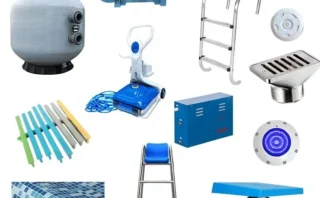Detailed Guide To The Manufacturing Process Of PE Film: Blown Film Vs. Cast Film
PE Film (Polyethylene Film) is widely used in packaging, agriculture, construction, and more due to its excellent flexibility, water resistance, and transparency. While many consumers may be familiar with PE Film, they may not know how it is produced. This article introduces the two main production methods for PE Film—Blown Film Extrusion and Cast Film Extrusion—helping you understand the manufacturing process and characteristics of this versatile material.

Ⅰ. What Is PE Film?
PE Film is a type of film made from polyethylene, known for its high flexibility and durability, making it suitable for various packaging applications. It is typically categorized into Low-Density Polyethylene (LDPE), High-Density Polyethylene (HDPE), and Linear Low-Density Polyethylene (LLDPE). Depending on different applications and requirements, manufacturers choose the appropriate production method to create high-quality PE Film.
Ⅱ. The Two Main Manufacturing Processes Of PE Film
1. Blown Film Extrusion
Blown Film Extrusion is a common process in PE Film production, especially useful for making films of different thicknesses and widths. The basic principle involves melting polyethylene, extruding it through a die, and then using air to blow it into a bubble, which stretches the film until it cools and solidifies.
Steps In The Blown Film Process:
Heating and Extrusion: Polyethylene is melted in an extruder until it reaches a fluid state for smooth flow.
Forming the Film: The molten PE is pushed through a circular die to form a hollow tube.
Bubble Blowing: High-pressure air is injected into the film tube, creating a bubble. Adjusting the bubble size controls the film’s thickness and width.
Cooling and Pulling: The film bubble passes through cooling rings, stabilizing and strengthening it. The film is then pulled by rollers to set its thickness.
Rolling Up: The cooled and shaped PE Film is flattened and wound onto rolls, creating the final product.
Advantages Of Blown Film Extrusion:
Versatile Thickness Range: Blown film can produce PE Film from thin to thick, meeting various packaging needs.
High Strength: The film gains extra strength due to multi-directional stretching during the blowing process, making it durable.
Broad Application: This method is compatible with LDPE, LLDPE, and HDPE, offering flexibility for diverse uses.
Disadvantages Of Blown Film Extrusion:
Lower Surface Smoothness: The surface of blown PE Film is less smooth and has slightly lower transparency, which may not be ideal for high-appearance requirements.
Thickness Control: Thickness control can be more challenging compared to cast film due to reliance on air pressure and cooling speed.
Applications Of Blown Film:
Blown PE Film is commonly used in agricultural mulch, garbage bags, packaging bags, and construction waterproofing, valued for its durability and cost-efficiency.
If you’re interested in buy PE Film for such applications, blown film can be a suitable choice for its strength and flexibility.
2. Cast Film Extrusion
Cast Film Extrusion is another method for producing PE Film, particularly suitable for creating thin, transparent films. The process involves extruding molten polyethylene through a flat die, followed by rapid cooling on chilled rollers to produce a smooth, even film.
Steps In The Cast Film Process:
Heating and Extrusion: Polyethylene is melted and fed through an extruder to a flat die.
Casting the Film: The molten PE exits the die, forming a thin sheet.
Cooling and Stretching: The film is cooled on chilled rollers, giving it a smooth surface and high transparency. Additional stretching refines the film’s thickness.
Winding Up: After cooling and stretching, the PE Film is trimmed and rolled, ready for use.
Advantages Of Cast Film Extrusion:
High Transparency and Smoothness: Cast PE Film has a smooth surface and high clarity, making it ideal for applications needing clear visibility.
Uniform Thickness: This method provides better control over film thickness, producing consistent, high-quality film.
Fast Production Speed: Cast film extrusion operates at a high speed, suitable for large-scale production.
Disadvantages Of Cast Film Extrusion:
Lower Strength: Cast PE Film is typically stretched in one direction, resulting in slightly lower strength than blown film.
Higher Raw Material Consumption: Cast film requires more materials for premium quality, which may increase production costs.
Applications Of Cast Film:
Cast PE Film is widely used in food packaging, medical packaging, and other products that demand high transparency and smoothness. This film type is perfect for display-oriented packaging.
For customers seeking PE Film for sale with high clarity and uniform thickness, cast film can provide an excellent solution.
Ⅲ. Comparison Of Blown Film And Cast Film
To choose between blown film and cast film production methods, it’s essential to understand the differences in their characteristics and suitable applications.
1.Transparency:
Blown PE Film generally has lower transparency and a slightly rougher surface, making it suitable for applications where appearance isn’t the top priority. In contrast, cast PE Film offers high clarity and a smooth surface, ideal for uses that need clear visibility, such as food or medical packaging.
2.Thickness Uniformity:
Cast film extrusion allows for more precise control over thickness, resulting in a very uniform film. This makes it an excellent choice when consistency is critical. Blown film thickness can vary more, as it depends on factors like air pressure and cooling speed.
3.Strength:
Blown PE Film benefits from multi-directional stretching during the blowing process, which gives it higher strength. It’s therefore ideal for applications requiring durability, like agricultural mulch and heavy-duty packaging. Cast PE Film is mainly stretched in one direction, so it tends to have slightly lower strength but offers better clarity.
4.Applications:
Blown film is commonly used in applications where durability is more important than appearance, including agricultural mulch, garbage bags, and construction waterproofing. Cast film is often chosen for products where clarity and a smooth finish are required, like food packaging, medical packaging, and product displays.
5.Cost And Production Speed:
Blown film extrusion is generally more cost-effective and slightly slower in production compared to cast film extrusion. Cast film’s faster production rate and material requirements make it more suitable for large-scale production but at a slightly higher cost.
Ⅳ. Conclusion
Whether produced by blown or cast methods, PE Film represents a combination of advanced technology and innovation. Both blown and cast processes offer unique advantages, making it possible to tailor PE Film to different needs. We hope this article has helped you gain a deeper understanding of PE Film manufacturing methods, enabling you to choose the right film type for your application.
PE Film has become an “invisible hero” in daily life and across industries, thanks to its versatility and superior properties. As a PE Film production factory, we are committed to continuous innovation and quality improvement, offering eco-friendly, durable, and visually appealing PE Film products to meet diverse market demands.
Whether you’re looking to buy PE Film or simply want to learn more about its production, we are here to provide the best solutions for your needs.

